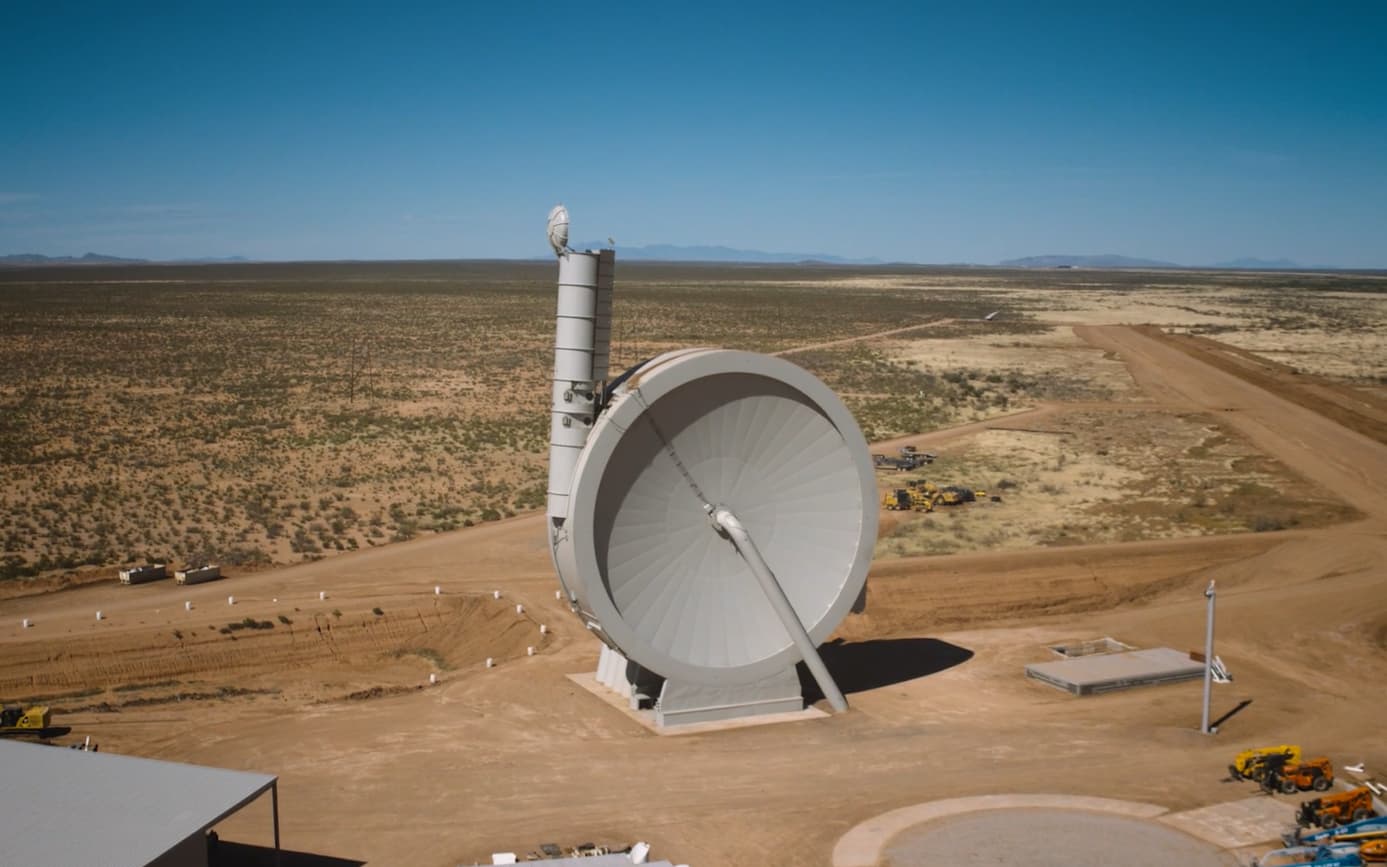SpinLaunch, a start-up that is building an alternative method of launching spacecraft to orbit, last month conducted the successful first test flight of a prototype in New Mexico.
The Long Beach, California-based company is developing a launch system that uses kinetic energy as its primary method to get off the ground – with a vacuum-sealed centrifuge spinning the rocket at several times the speed of sound before releasing.
“It’s a radically different way to accelerate projectiles and launch vehicles to hypersonic speeds using a ground-based system,” SpinLaunch CEO Jonathan Yaney told CNBC. “This is about building a company and a space launch system that is going to enter into the commercial markets with a very high cadence and launch at the lowest cost in the industry.”
Founded in 2014 by Yaney, Spinlaunch’s successful test on Oct. 22 at Spaceport America in New Mexico marks a major milestone in the company’s progress. SpinLaunch has largely stayed quiet until now, which Yaney explained was due to the ambitions of the company.
“I find that the more audacious and crazy the project is, the better off you are just working on it – rather than being out there talking about it,” Yaney said. “We had to prove to ourselves that we could actually pull this off.”
SpinLaunch has raised $110 million to date, from investors including Kleiner Perkins, Google Ventures, Airbus Ventures, Catapult Ventures, Lauder Partners and McKinley Capital.
The first flight
The SpinLaunch suborbital accelerator represents a one-third scale version, but – standing at more than 300 feet, “taller than the Statue of Liberty” – Yaney emphasized that it’s the size the company needs “to really prove the technology.”
The vacuum chamber holds a rotating arm, which Yaney said accelerates the projectile to high speed and then, “in less than a millisecond,” releases the vehicle for launch. The suborbital project is about 10 feet long, but “goes as fast as the orbital system needs, which is many thousands of miles an hour,” Yaney added.
“We can essentially validate our aerodynamic models for what our orbital launch vehicles are going to be like and it allows us to try out new technologies when it comes to release mechanisms,” Yaney said.
SpinLaunch’s first suborbital flight utilized about 20% of the accelerator’s full power capacity for the launch, and reached a test altitude “in the tens of thousands of feet,” according to Yaney.
While the first test flight vehicle did not have a rocket engine onboard, SpinLaunch plans to add that and other internal systems in later suborbital test flights. The company also plans to recover and reuse its vehicles, with Yaney noting the company recovered the first one “and it is it is absolutely flyable.”
The current SpinLaunch test schedule has the company conducting about 30 suborbital test flights over the next six to eight months from Spaceport America.
Moving toward orbital launch
SpinLaunch is now finalizing the design of its full-scale system, with Yaney saying that testing to date has eliminated about 90% of the system’s risk.
Traditional rockets use a large booster, typically with a number of engines, to lift off the ground. That means that most of the rocket’s mass at liftoff is fuel, with only a small percentage of its total mass available to carry payloads. SpinLaunch’s approach aims to flip the “rocket equation” on its head, Yaney said, which would be “dramatic” in reducing the size of the rocket, as well as its complexity and cost.
The SpinLaunch design for its orbital vehicle would be able to carry about 200 kilograms of payload to orbit, equivalent to a few small satellites.
The company is finalizing an agreement for the location of its first orbital launch system, with Yaney noting that it will not be at Spaceport America but rather at a “coastal location.”
“It’s a site that needs to be able to support dozens of launches per day,” Yaney said.
SpinLaunch declined to comment on its backlog of customer launch contracts, but the company signed a contract with the Pentagon’s Defense Innovation Unit in 2019 for its first experimental orbital launches.
